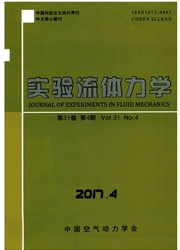

 中文摘要:
中文摘要:
PIV粒子测速技术与其它测速技术相比,具有实时性和无干扰性的优点。本文以污水海洋排放系统内部海水入侵形成的复杂流动为例,将PIV测速技术应用于管道内部的非恒定密度分层流研究。海水入侵海洋扩散器将会大大降低污水处置效率,尤其是在早期建造的没有海水入侵防护装置的污水海洋处置工程中,这个问题显得尤为突出。本文在实验室里建造了一个简化的污水海洋排放系统模型,采用PIV粒子测速系统对排放管道内的流速场进行测量,在此基础上对排放管道海水入侵过程及其发展机制进行了分析。实验研究结果表明,排污流量是影响排放系统内部流动型式的主要因素,密度分层流交界面的卷吸和紊动掺混是排出入侵海水的主要动力,而且这两种动力在排出海水时所起的作用比重不同,主要取决于排污管道内的污水动量。
 英文摘要:
英文摘要:
The PIV(Particle Image Velocimetry)technique could measure flow field non-interfering and synchronously.In this paper,the PIV technique was applied to measure the internal flow field in marine sewage outfalls during saline intrusion and purging.Saline intrusion into marine sewage outfalls will greatly decrease the efficiency of sewage disposal,especially in some early-constructed structures without special safe-guard measures.A simplified physical model of the sewage outfall was built in the laboratory to investigate the mechanisms of saline intrusion and purging flow in the system.In order to present the flow characteristics at different inflowing sewage discharges,three series of velocity-fields were measured with PIV system.The development of flow patterns at different inflowing sewage discharges and the mechanisms of saline intrusion and purging were analyzed.For an outfall system with certain structure,the inflowing sewage discharge was a decisive factor that affected the internal flow pattern.The internal flow during saline intrusion and purging was three-dimensional,unsteady,density stratified and with intense interfacial entrainment and turbulent mixing.The measured velocity-fields indicated that the interfacial entrainment and turbulent mixing were two main mechanisms to extrude the saline from the system and these two mechanisms would take different proportions due to the different inflowing momentum.
 同期刊论文项目
同期刊论文项目
 同项目期刊论文
同项目期刊论文
 期刊信息
期刊信息
